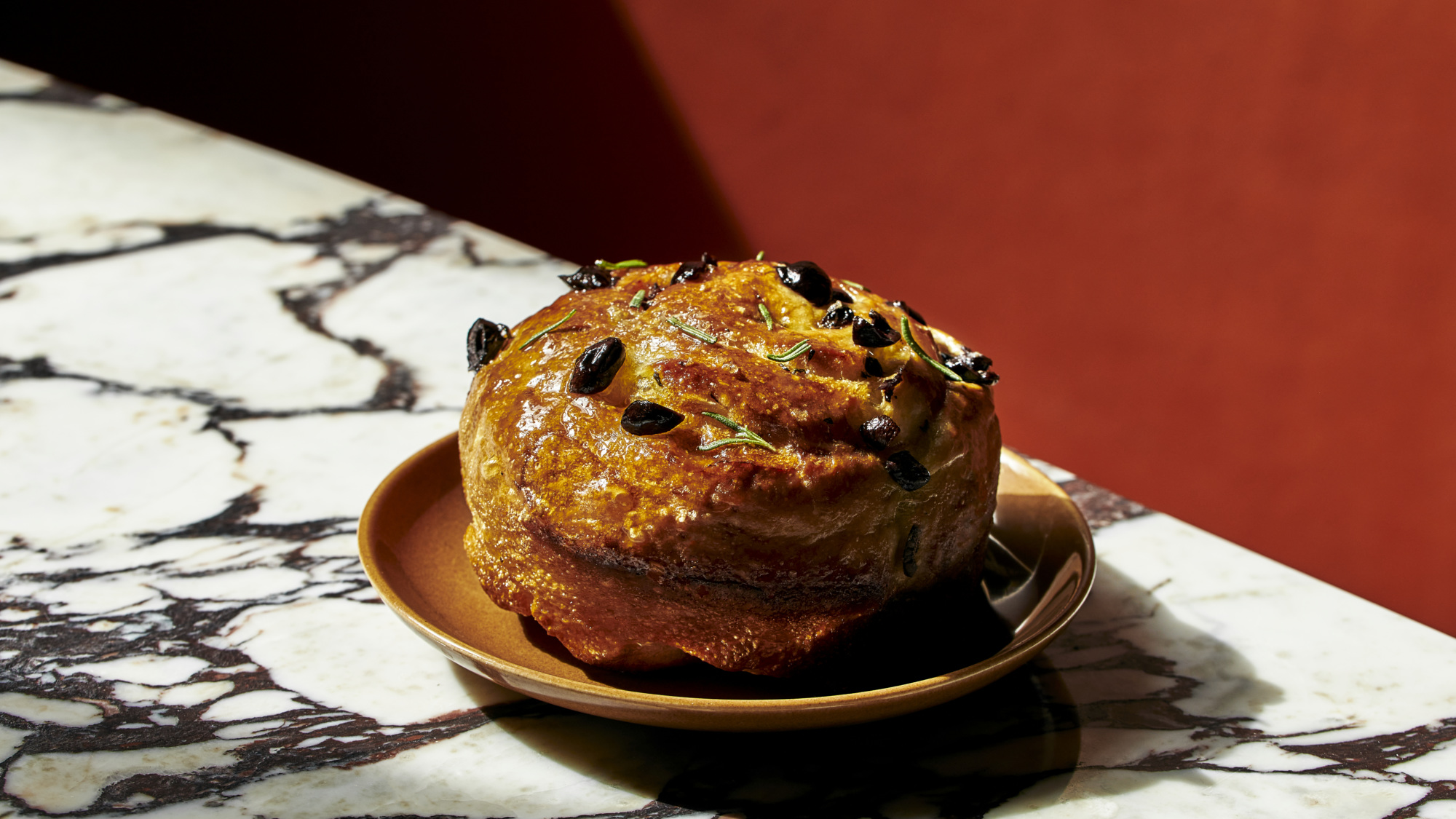
Everything You Need to Know About Bacetti, Now Open in Echo Park
Before you go to a restaurant, what do you want — or need — to know most? In our series, The Rundown, we’re sharing all the essentials about newly opened (as well as some of your favorite) restaurants.
Bacetti has been a long time coming. Owner Jason Goldman has been working through his vision for the Echo Park Ave space since 2017, and now, it’s finally come to fruition. As the keynote of a handsome complex that also includes the darling wine bar Tilda, Bacetti is the first full-scale restaurant to open on the charming strip of Echo Park where the original Cookbook grocery store is located alongside a bike shop, indie bookseller des pair, and the vegan café Glowing Juices.
With chef Joel Stovall — formerly of Orsa & Winston — at the helm of the kitchen, Christian Clarke (Tilda, The Exchange) as the beverage director, and Bryan Carter (Night+Market) as general manager, Bacetti is open for dinner from Tuesday through Sunday for neighborhood locals and destination diners alike. Here’s everything you need to know before you go.
1. What Bacetti lacks in seats, it gains in volume. And, like Rome, it wasn’t built in a day.
The 1920s-era bow-truss building that houses both Bacetti and Tilda boasts a lofty interior. The ceilings soar, and at the back of the restaurant is a spacious, glass-enclosed kitchen marked by a white-and-black marble pass. And yet between the dining room and the sidewalk patio, Bacetti has fewer than 90 seats in total. “We wanted to play up its big volume,” Goldman says, “but at the same time, have it feel cozy and neighborly and not stark.” He worked with Stayner Architects to create an aesthetic that combines Italian design elements (think terrazzo tables, dark green booths, and salmon-colored tiles) with early-century industrial architecture.
Since the building had never been a restaurant before, the timeframe for the buildout and permitting was longer than average from the get-go. The idea to turn the neighboring space into a wine bar came later, but manifested first — in February 2020. “The original plan was for Bacetti to open pretty close on the heels of [Tilda],” recounts Goldman, but after the pandemic hit, it turned into another 18 months. That’s why the upper corner of Bacetti’s menu reads, “Rome wasn’t built in a day.”
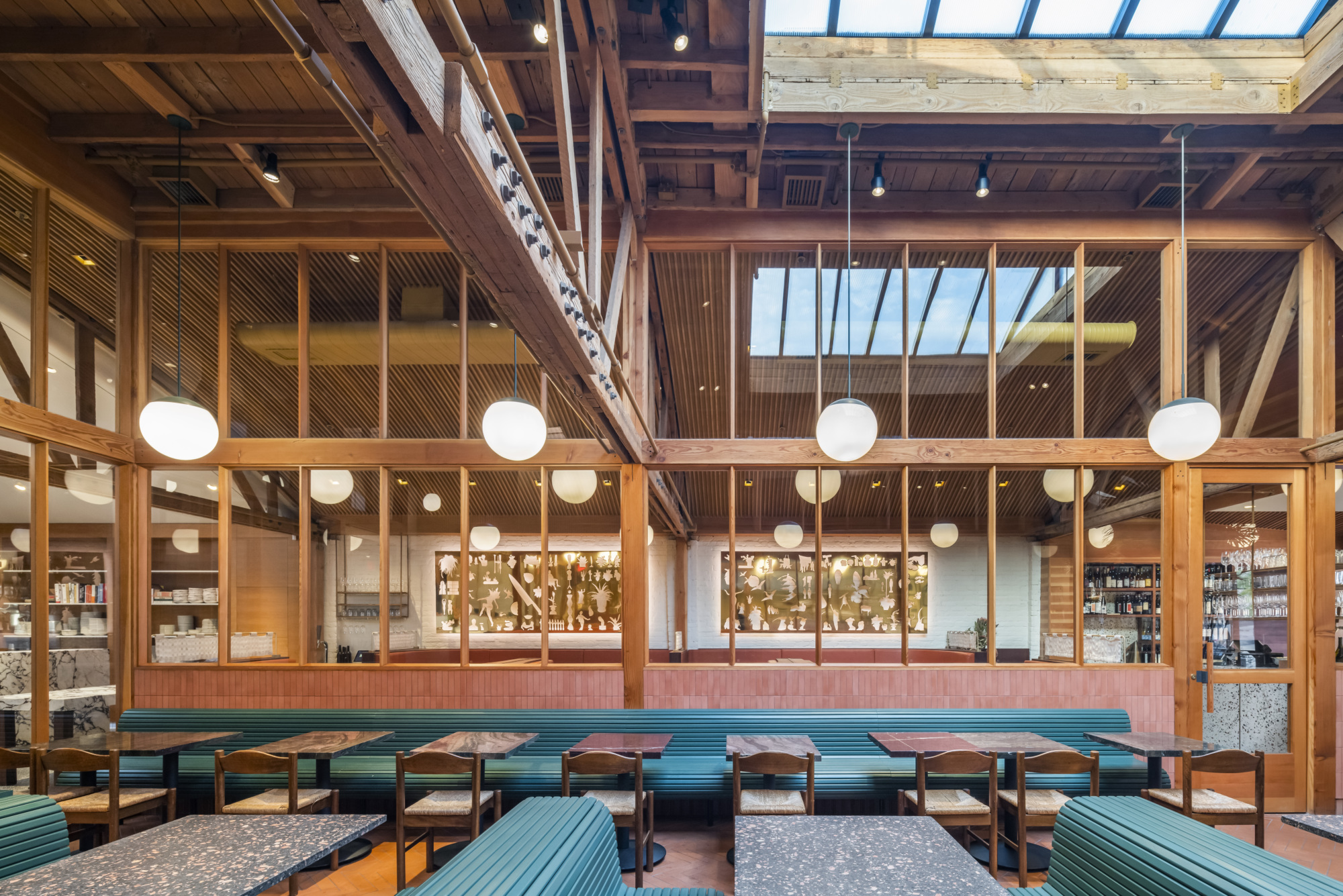
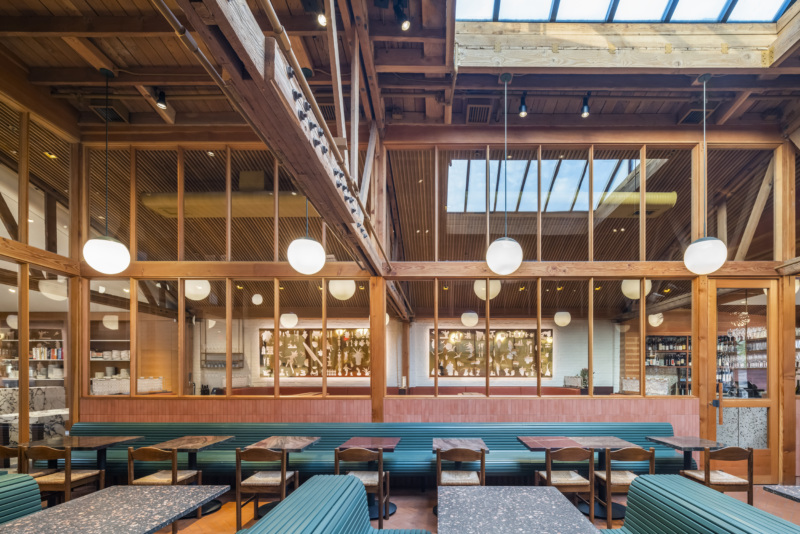
2. Roman food with a California sensibility — and Jewish and North African influences — is what’s on the menu.
Prior to Bacetti’s opening, chef Stovall traveled to Rome for research. In turn, he designed a robust menu with six sections total (not including dessert) that flow from antipasti to pizze, piatti piccoli (small plates), housemade pasta, carne e pesce, and contorni. Beef tartare is done as a bruschetta with capers and shishito aioli. The potato pizze includes garbanzo beans, mozzarella, Parmigiano, and rosemary. There’s rigatoni all’Amatriciana, tonnarelli cacio e pepe, and a whole branzino with gremolata. In addition to Stovall’s takes on traditional dishes, seasonal California produce is peppered throughout the menu — like in a radicchio salad with persimmon, shaved fennel, walnuts, and manchego and roasted kabocha squash with hazelnut and crème fraîche — and some dishes incorporate Jewish and North African flavors. For example, Bacetti’s winter-appropriate braised lamb shank comes with couscous, prunes, and taggiasca olives, while Jerusalem artichokes are paired with sunflower seeds, dates, and za’atar.
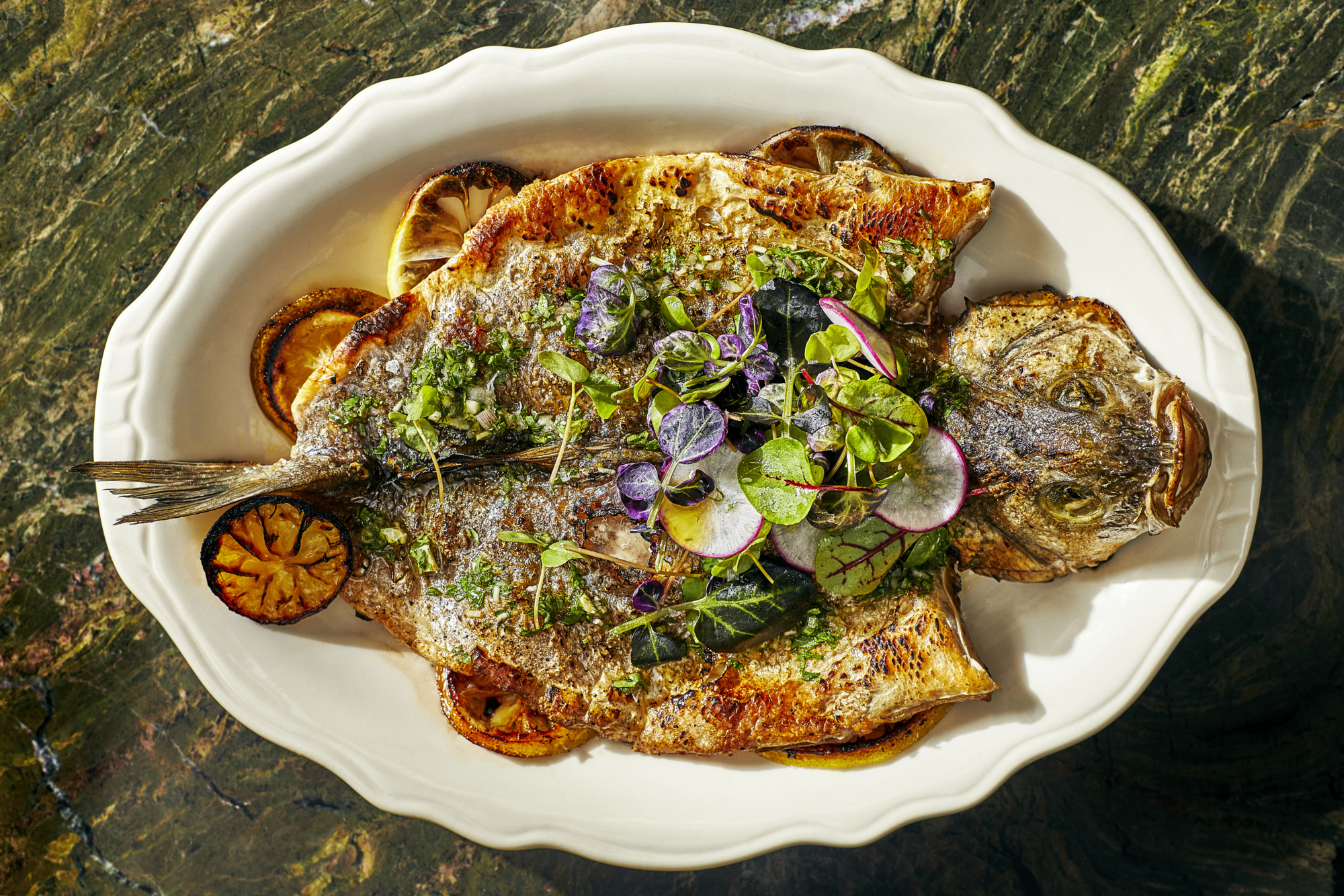
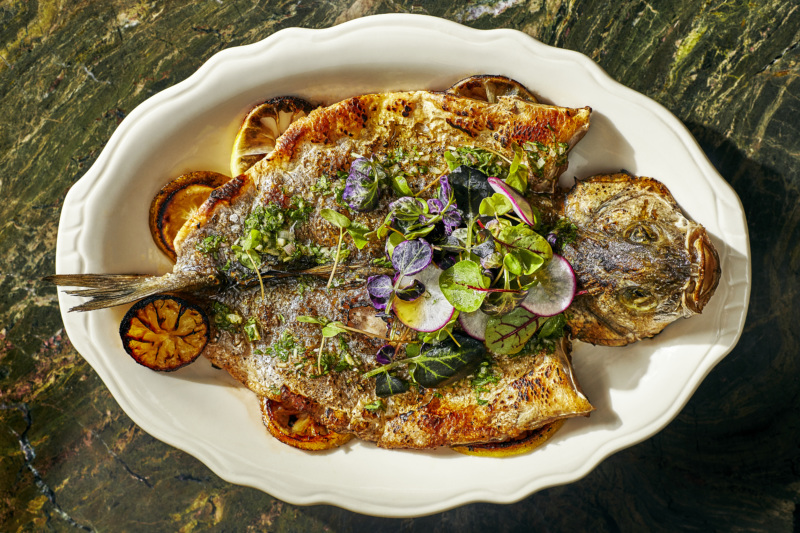
3. Be sure to get an order of the focaccia ebraica. Or two.
Although Bacetti is only a month old, the focaccia ebraica is shaping up to be its quintessential dish. The round-shaped, pull-apart bread is based on a Roman-Jewish street food called pizza abraica, which is akin to a dense cookie rather than a savory carb. Stovall’s rendition is studded with black olives, currants, and rosemary and can be found in the center of most tables on any given night. Wine director Christian Clarke says he always tells people that the focaccia “should stay on the table for the entire meal, or to get two, because you can use it as as a conduit for sauce.”
4. Tilda and Bacetti work in tandem, but their wine lists aren’t the same.
As Goldman puts it, Tilda is “fairly casual.” You can have a glass of wine and be in and out in 20 minutes or hang out all night, while Bacetti is a full-blown restaurant structured around coursed meals. Tilda is also the obvious place to pre- or post-game dinner at Bacetti. And while imbibers at Tilda have a direct view into Bacetti through a dividing glass wall, the offerings at each location are distinct. Clarke describes the California-heavy wine list at Tilda as “more focused on just drinking good natural wine that’s meant to be quaffable, something to enjoy amongst friends with very little pretentious energy.”
At Bacetti, the list is predominantly Italian (for now) and focused on approachable “blanket pairings” so that guests can easily order a bottle to drink with their meal without having to rely on too much handholding from the staff. “That’s why we have it on the back of the food menu, as opposed to as a separate list,” Clarke says. As the seasons change, and the food menu with them, the wine list will evolve as well.
One noticeable feature is an entire section devoted to rosato, or Italian rosé, which are weightier than their paler, easy-drinking French counterparts. “These rosés offer a little bit more complexity, they have like a little bit more maturation on the end, they have a little bit more depth of character in savory notes and bright red fruits,” Clarke explains, adding that he thinks of rosato as “the original skin contact wine.”
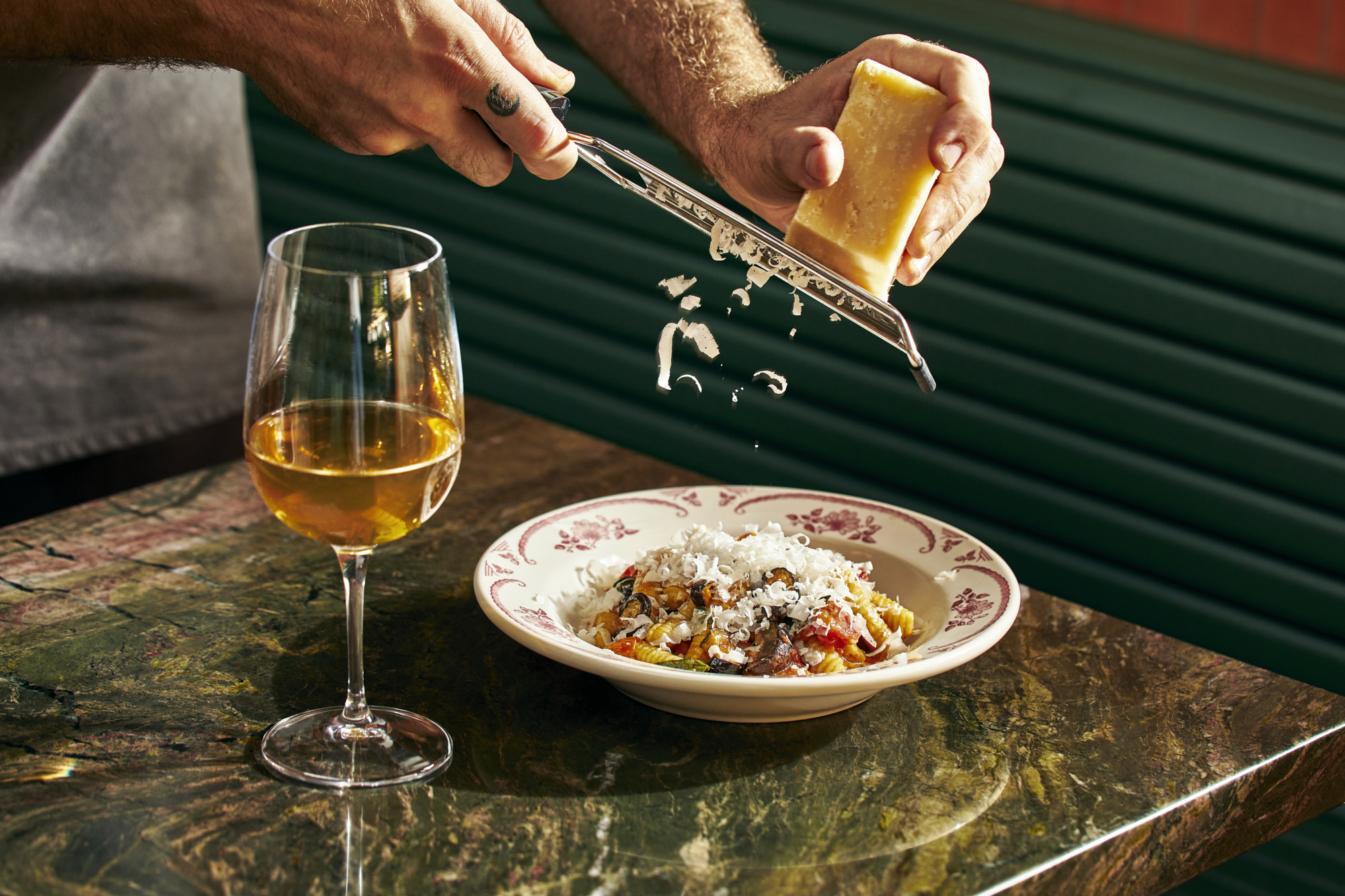
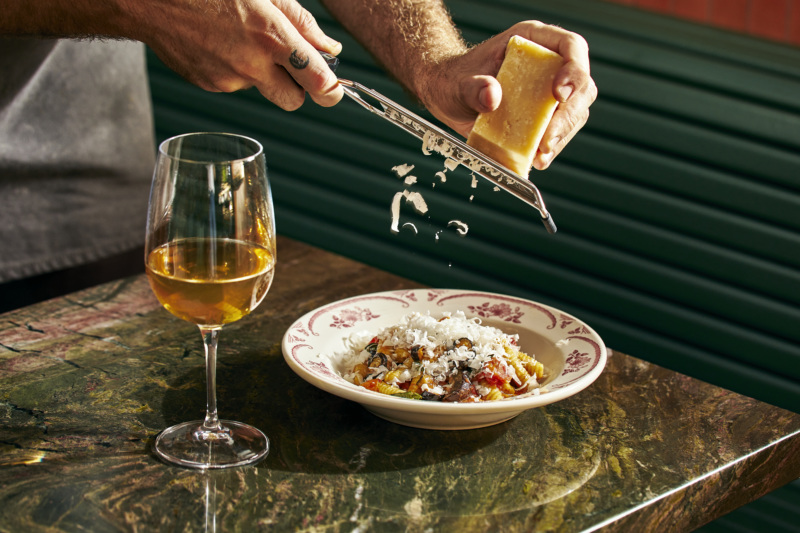
5. Bacetti’s long game: to be an L.A. trattoria.
Bacetti is the kind of restaurant you could visit twice a week for a month and never order the same thing. The sprawling menu is designed to suit various moods. “There’s a kind of choose-your-own-adventure sensitivity to it. You could come in and have a salad, a pizza, and a glass of wine or a five-course meal,” Goldman says. He adds that the desire to open a Roman restaurant was inspired not only by the delicious food he ate while traveling in the city, but also because he felt that the simplicity and heartiness of the cuisine translated really well into a neighborhood restaurant. A trattoria, if you will.
Emily Wilson is a Los Angeles-based food writer from New York. She has contributed to Bon Appétit, Eater, TASTE, The Los Angeles Times, Punch, Atlas Obscura, and more. Follow her on Twitter and Instagram. Follow Resy, too.















